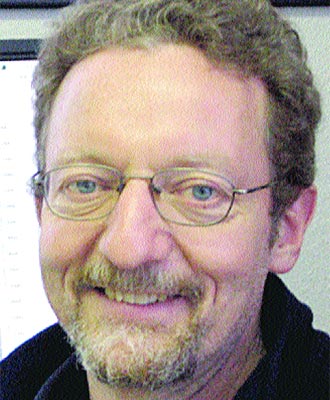Abstract
Traditional seismic imaging as widely practiced in the oil and gas industry, conceptually treats the seismic velocity model as if it were a separate entity from the seismic reflectivity image. A whole industry has been constructed around this separation, and for good cause: the velocity model is a very smooth, low resolution representation required for successful imaging, while the final reflectivity image contains the detailed, structural images that interpreters need most. However, for the naïve geophysicist learning about imaging for the first time, this separation seems strange –aren't the velocity model and the reflectivity just two different ways of looking at the same earth?
In order to answer the question posed in the title, it is helpful abandon the distinction between the model, and the image (perhaps, our naïve geophysicist will be happier too). Instead, at any given point we only have the model, which we progressively try to improve until it finally it completely accounts for our seismic data; in an ideal world we would be able to use the model to predict every minor wiggle on every trace from every shot gather in the survey. Generally speaking, the goal of seismic waveform inverse methods is to obtain and study the class of models that fully explain the data. If we could arrive at such a state, the seismic waveforms would be able to tell us little else, and the model would combine aspects of both the velocity model and the reflectivity image. Crucially, this approach includes parts of the seismic waveform that are not used in conventional processing, such as wide angle reflections and refractions (which carry very useful information).
Of course, it is one thing to imagine we could find a model that completely accounts for all our seismic waveforms, but quite another thing to accomplish this in practice. First and foremost, we need an accurate, reliable and reasonably fast forward method to predict the waveforms for all the trial models along the way. Simulating the wave equation by numerical finite differences is a well known method for doing this, but tricks are needed to overcome the major computational expenses involved. Next on our list of needs is a suitable inverse method for updating the model, in order to iteratively improve the data fit. There are many mathematical possibilities, all of them fraught with other difficulties. Finally, we need to bring to the problem our experience in methods of preprocessing the data, and postprocessing the images.
This talk will deal with several aspects of the waveform inversion problem: the philosophical goals, the mathematical techniques, the engineering of the methods to allow them to provide useful results, and most importantly, a suite of examples demonstrating the potential of using waveform inversion to solve geological imaging problems in a wide range of applications. Ultimately, surveys should be specifically designed for this waveform approach, and it is one of the goals of this lecture to encourage an awareness of the survey design principles that may lead to further successes.
Biography
Dr. Gerhard Pratt joined the Department of Geological Sciences and Geological Engineering at Queen's University in 1998, where he is currently a Professor of Geophysics. His interests are in the fields of seismic waveform modelling, seismic imaging and in the combination of these two techniques in "seismic waveform inversion".
Following a B.Sc. in Engineering Physics (1980) from Queen's University, he joined Schlumberger International as a Wireline Engineer, working in Germany, and the Dutch and Norwegian sectors of the North Sea in the early 1980's. After this initial exposure in the industry to the power of non-conventional seismic imaging with walkaway VSP surveys, Gerhard returned to University to obtain his M.Sc. and PhD degrees from Imperial College London (1986, 1989), under the supervision of Professor Michael Worthington, where he became interested in the powerful mathematical inverse methods of Albert Tarantola. He followed his PhD with a two year postdoctoral fellowship at the University of Toronto, working with Professors Chris Chapman, and Gordon West, developing methods for traveltime tomography in anisotropic media. From 1992-1997 Gerhard was the Elf Acquitaine Lecturer in Geophysics, in the Department of Geology at Imperial College, London.
Gerhard has been actively researching methods in seismic wave modelling and imaging throughout his academic career. A key development was the implementation of frequency-domain techniques that makes possible large scale forward and inverse modelling of exploration seismic data, through numerical simulation of the full wave equation. Together with his students, he has been able to use these methods in imaging structures in a wide range of applications, from large scale wide-angle deep crustal profiling, to exploration scale imaging, to small scale site investigations. Most recently he has begun using these techniques for imaging breast cancers in medical ultrasound tomography. His work has been published in over 40 peer-reviewed articles in Geophysics, Geophysical Journal International, Geophysical Prospecting and other leading journals. He has coauthored over 100 conference presentations at the CSEG, the SEG, the EAGE and many other meetings.
From 1996 to 2000 Gerhard was an associate editor of Geophysics; he is currently an editor of the Geophysical Journal International. His 2004 paper with Laurent Sirgue, "Efficient waveform inversion and imaging: a strategy for selecting temporal frequencies" received an honourable mention for best paper in Geophysics. He has been active as a geophysical consultant in a number of different fields.





